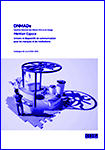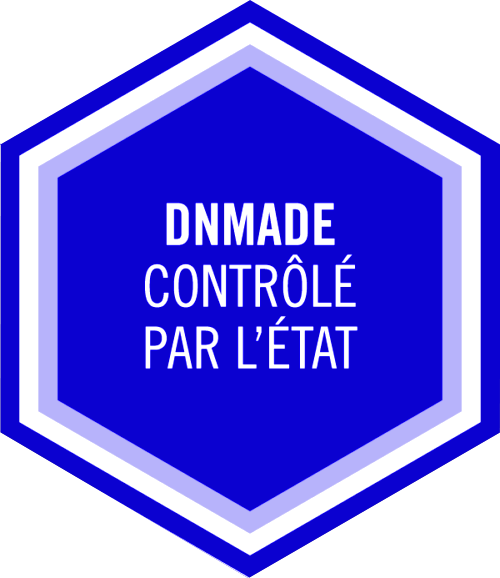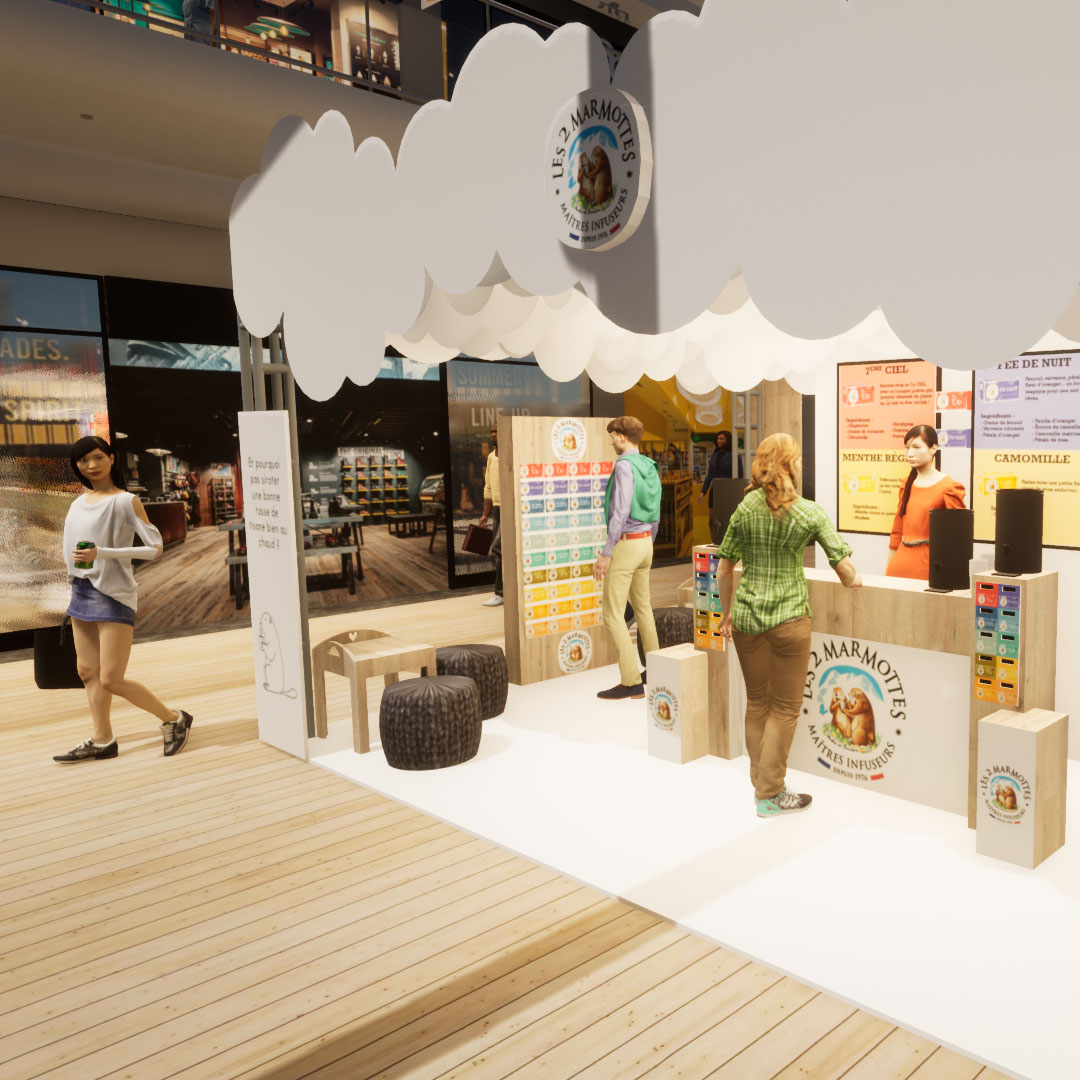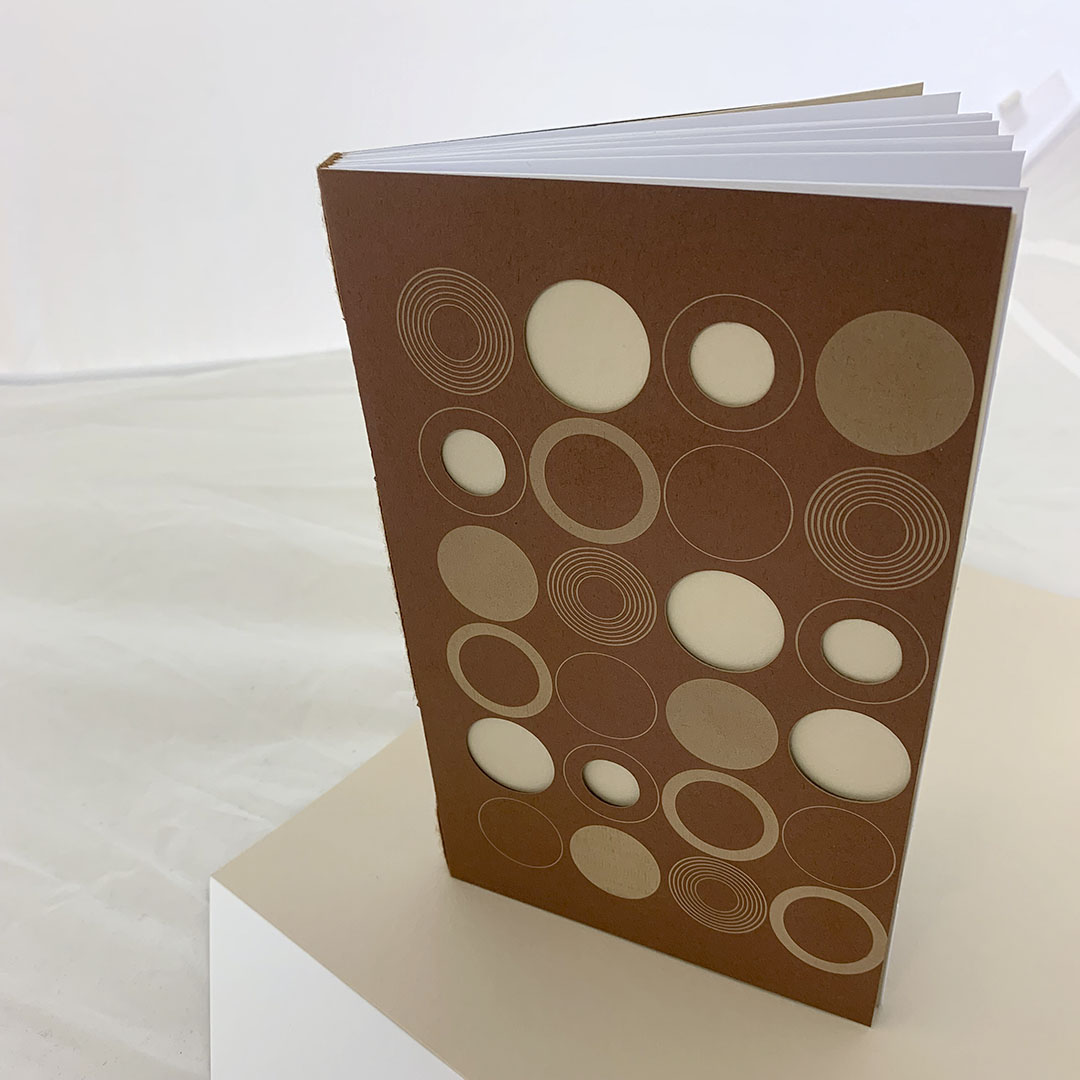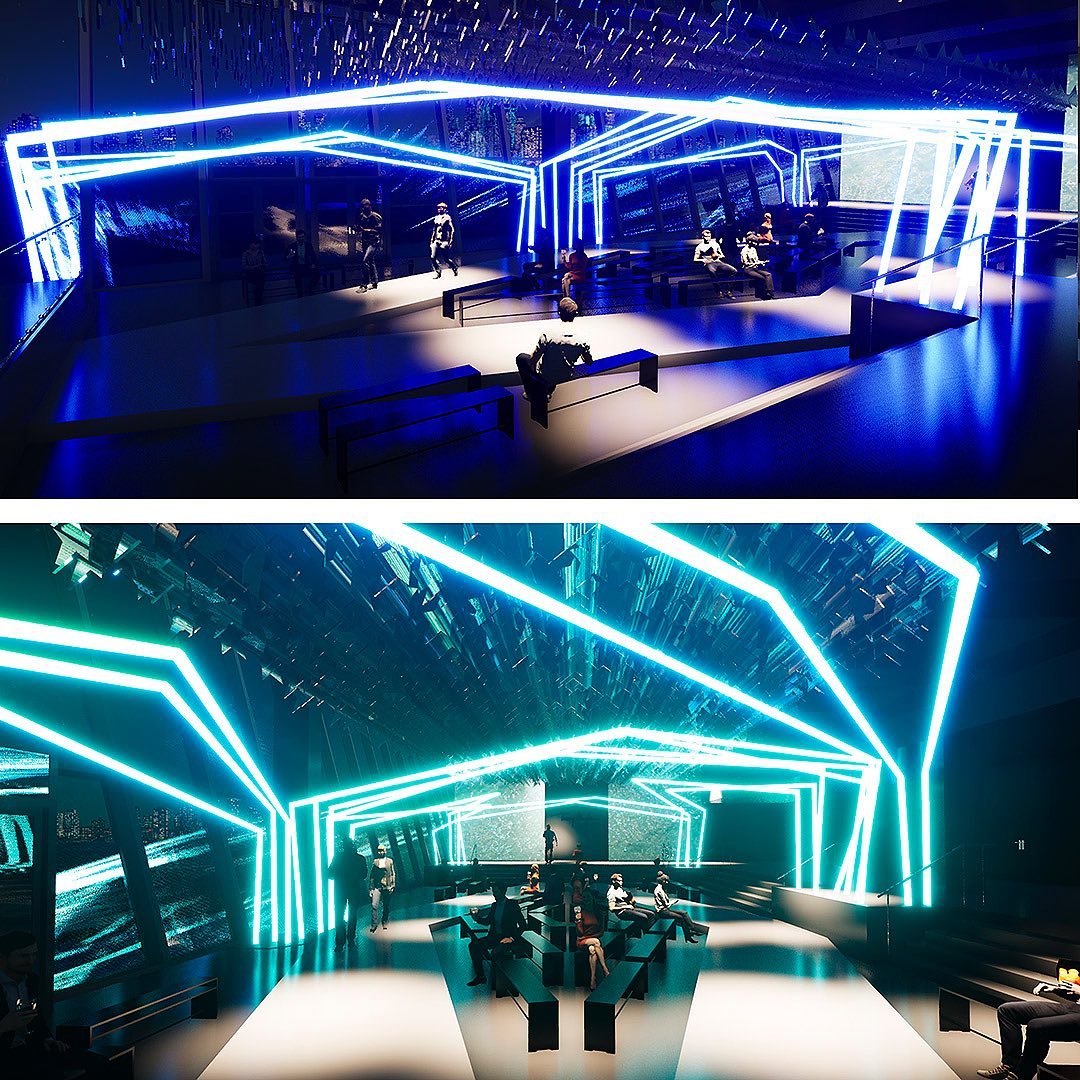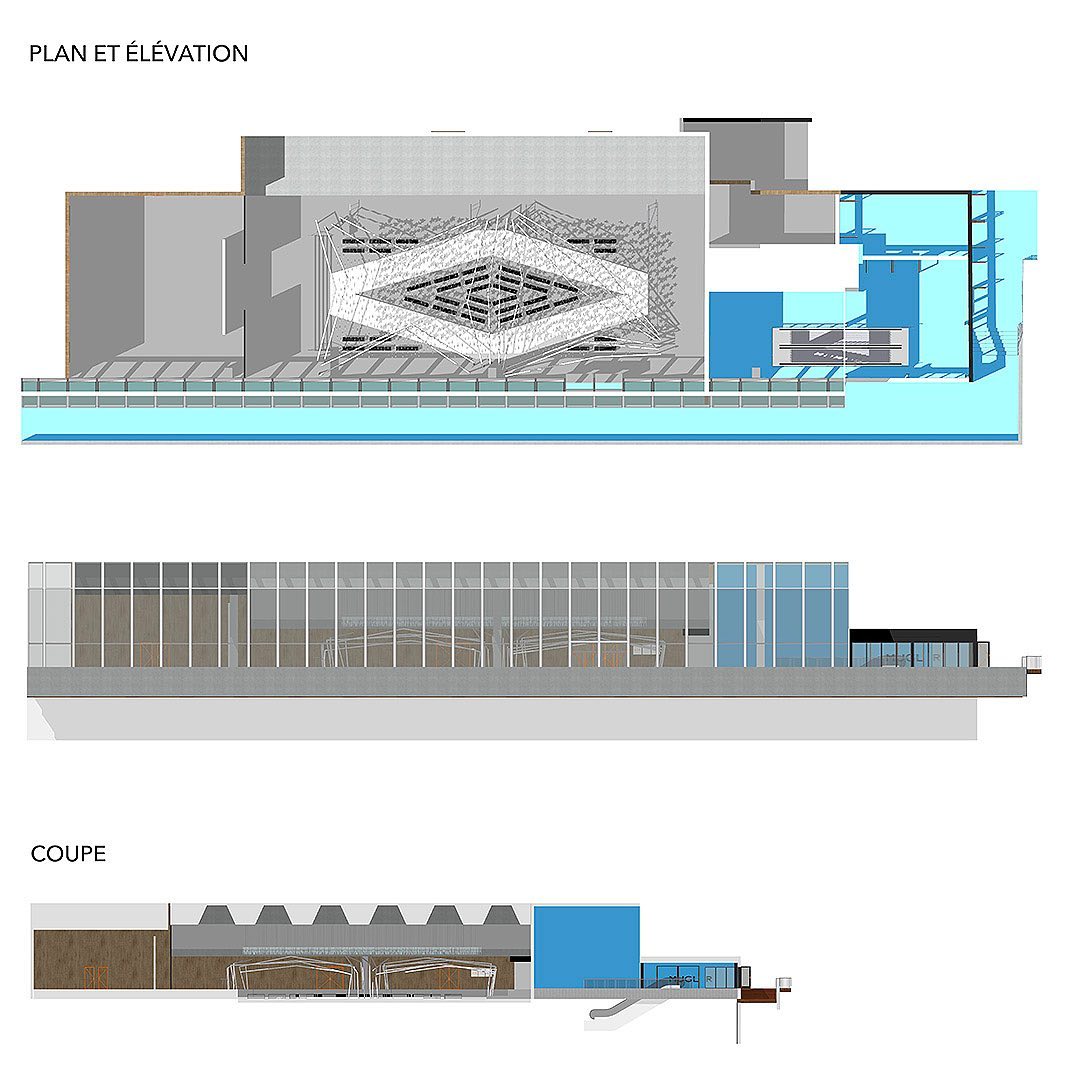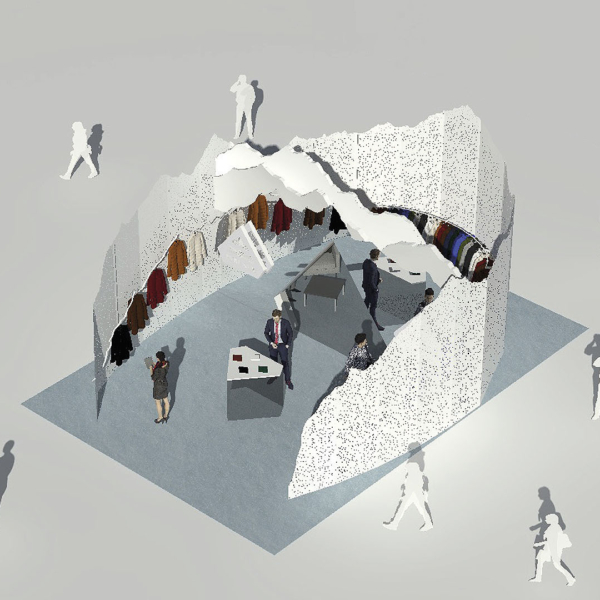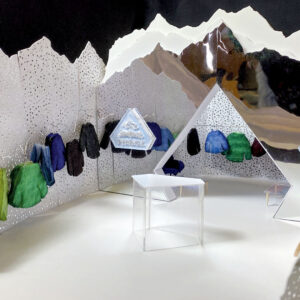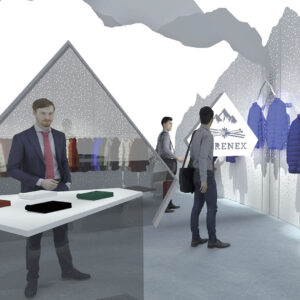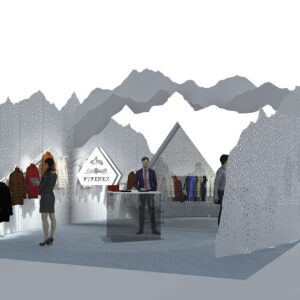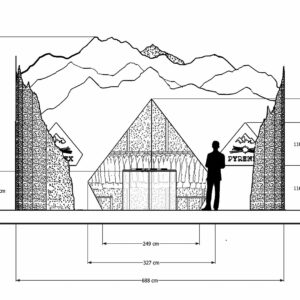> Registration
The speciality
This course deals with the design of all kinds of information structures and promotional devices, the creation of traditional or digital scenic environments and the construction of architectural volumes-sets. Projects with a strong focus on storytelling and architectural expression, such as :
- Pop-up stores,
- Showrooms,
- Window displays,
- Corner (specific sales area dedicated to a brand in a department store such as BHV or Nouvelles Galeries),
- Professional and commercial stand,
- Malls tour (communication system in shopping centres),
- Roadshow (travelling communication system),
- Street-marketing campaigns,
- Visual and animated scenography.
They serve a sensorial marketing and communication strategy that accompanies the customer experience and the immersion of users, and respond to the client’s specifications or the imposed framing note.
In this active field of theatricality known as ‘scenography’, there is a connection (or porosity) with interior architecture and layout. The training leads students to conceptualise, extend or give a unique identity to spaces welcoming customers or the public. These scenographic projects, which tend to be ephemeral or on a small architectural scale, take place in a variety of indoor-outdoor contexts, ranging from commercial or institutional events to urban installations.
Particular attention is paid to the sensitive experience, the narrative or message that the user will have of the space and in the space designed.
All these projects have been designed for supermarkets, department stores, luxury brands, shops, concept stores, trade fairs, museums and other cultural venues
This course is part of a school accredited for graphic design and wood processing, enriched by an Applied Arts course from the Bac STD2A to the DSAA and a professional technical platform.
The course
The teaching project is based on experimentation and the practice of design projects in workshops, combining the mastery of digital tools and specific technical skills.
You will practise specific manufacturing/creation techniques throughout the course (study of materials, dressing and set design, lighting and sound, modelling and 3D printing, laser cutting, mock-ups, prototyping in the workshop, etc.).
The project-based approach at the heart of the course encourages experimentation in the research and conceptualisation process. The pooling of this approach and shared analysis will support critical thinking and personal commitment.
Complementary practices will also enrich your course (bookbinding, engraving, screen printing, typography, photography and motion design).
The curriculum
The programme is developed over six semesters as follows :
- The first two semesters enable students to acquire fundamental conceptual, artistic and technical tools.
- In the third and fourth semesters, students are encouraged to delve deeper into their specialities. They work out the issues, develop a range of concrete hypotheses and experiment with the various stages of the project approach, either individually or as part of a team. At the end of the 2nd year, students undertake a work placement lasting at least 3 months.
- The fifth and sixth semesters are devoted to perfecting the specialities of the programme.
Skills are assessed throughout the learning process. Teaching units are assessed by continuous assessment based on structured skills.
In the third year, the dissertation and project are assessed at a final presentation before a jury.
Further study
The LICENCE grade conferred by the diploma gives access to level 7 diplomas :
- Master's degree in design from a university or the Ecole Normale Supérieure (ENS) Paris-Saclay;
- Diplôme supérieur d'arts appliqués (DSAA) from the lycées and écoles supérieures d'arts appliqués (ESAA Boulle, ESAA, Duperré, ESAIG Estienne, ENSAAMA, ESAAT Roubaix);
- Diplôme national supérieur d'expression plastique (DNSEP) from art and design schools (ESAD);
- Master's degree in teaching, education and training (MEEF) from the Institut National Supérieur du Professeurs et de l'Education (INSPÉ);
- A state diploma in architecture (DEA) or landscape design (DEP);
- A diploma from the Ecole Nationale Supérieure de Création Industrielle (ENSCI), the Ecole Nationale Supérieure des Arts Décoratifs (ENSAD) or the Institut National du Patrimoine (INP);
- Masters and DU (university diploma) in France and abroad.
Career opportunities
Graduates of the DN MADe can work in a design office or as freelancers.
They can work in communication and event agencies, research and design offices, linked to private bodies (e.g. brands, niche or start-up companies or major chains) or public institutions (e.g. regional and national cultural promotion) as :
- Layout and ephemeral architecture designer,
- Event and communication space designer,
- Scenographer,
- Event project manager,
- Design Manager,
- Art director,
- Stand designer.
Local partners
The teaching team is regularly involved with local and private clients such as Maison Baluchon, Moustache, In’bô, Caprice des Dieux, etc., as well as a special partnership with cultural services (Le Signe, Les Silos, Le Nouveau Relax, the Tourist Office, Chaumont’s cultural seasons) and Chaumont’s Union commerciale, industrielle et artisanale (commercial, industrial and craft union).
You will also have the opportunity to meet professionals who will be sharing their professional experience through courses, conferences and workshops.
Professional stand for the Pyrenex brand - 2022
Creation of a commercial stand for the Who’s Next trade show, adapted to the tone and DNA of Pyrenex. Conceptualising a global scenography which will have to make sense and create an impacting universe giving visibility within aisles saturated by the competition…
Through its collections, Pyrenex offers technical products designed for sport, as well as urban-style basics and trendier models designed by young French designers.

